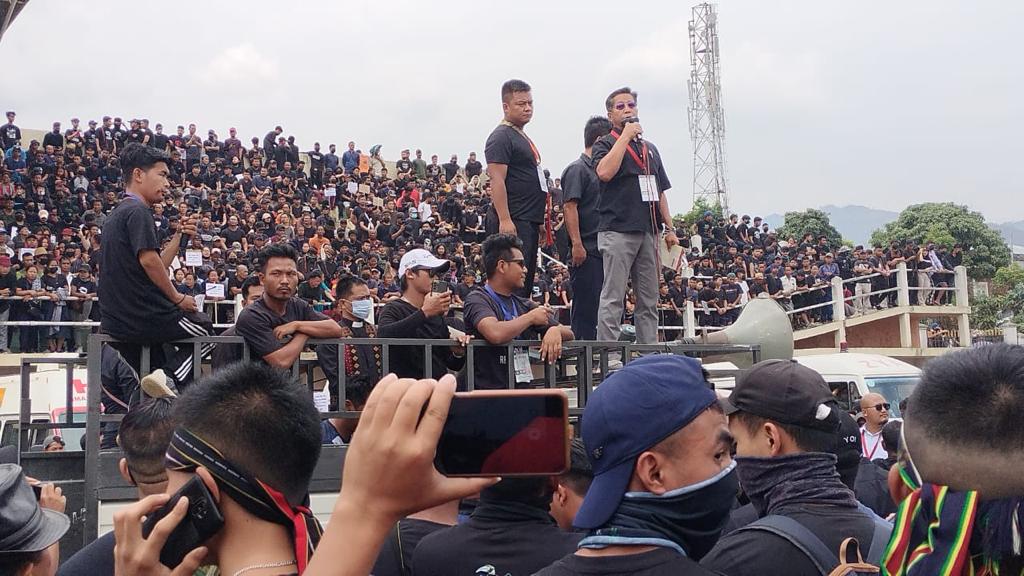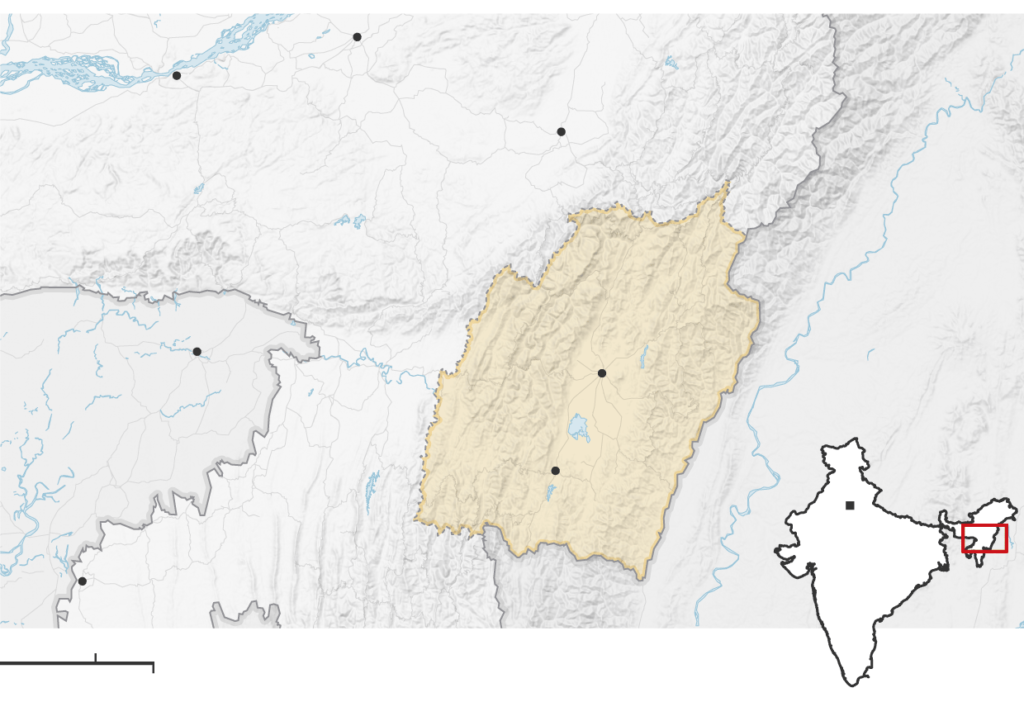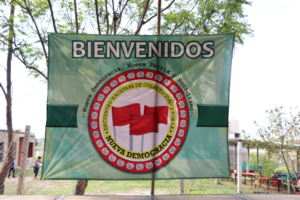
India: on the current struggle in Manipur
Rally in the 3rd of May in Manipur. Source: Khalvontawi
The 3rd of May started many clashes in the State of Manipur, which are still going strong nowadays. We have reported on that. This day, the All Tribal Students Union of Manipur (ATSUM) conveyed a mobilization in protest for the inclusion of the Meitei in the list of Scheduled Tribes, what make Meiteis able to legally expel the peasantry of their lands.
Currently, the death toll is 138 people killed, and since now, there are around 60.000 peasants expelled, most of them from The Hills area, of the Kuki tribal group. But the struggle started pretty much before. In February, there were new expels of peasants by the State of Manipur in the district of Churachandpur, and after that, in the month of March there were mobilizations, repressed with violence by the Indian police. Also there was a general strike in the month of April, conveyed by the Indigenous Tribal Leaders’ Forum (ITLF), at the same time of a visit of Prime Minister of Manipur, N Biren Singh. After that, started the first riots. The big landlords class and the bureaucratic capitalist class class want to expel the peasants for continuing the concentration of lands, and also because the oil, gas and other minerals in the area.
Regarding the sides involved in the struggle, mainly are two:
On the one hand, there is the bureaucratic capitalist class and the big landlords, interested in take of the lands of the peasantry. They belong to the tribe Meitei and they are mainly Hindu. They have the resources of the Indian State, and they always ruled the State of Manipur, no matter with which political party, and for this, they are able to make big deployments of police forces in order to expel the peasants from their lands, as happened in the 20th of February in one of the facts who triggered the current revolts. They are mainly located in the fertile valleys of Imphal, the capital. Currently, the interests of the dominant classes are represented by the Bharatiya Janata Party (BJP) in Manipur. Besides the State repressive forces, these dominant classes also have made their own militias and groups of thugs, and they are using these ones as a head of spear against the peasantry which want to expel from their lands.
On the other hand,there is the peasantry, who is defending itself against the attempts of expel and the aggression of the bourgeoisie and the big landlords. The peasantry is mainly gathered in two tribal groups, the Kuki and the Naga, and they are mainly Christians. They live mainly in the hills. They have their own unitary organizations as ATSUM or ITLF, but, at the same time, they have their own regional peasant organizations. In the case of Kuki, they recently suffered many grievances and attacks by the bourgeoisie and the big landlords belonging to the Meitei group, and the government of Manipur: they criminalized the Kukis, stating this group are illegal immigrants from Myanmar, and due to this, their settlements in many of their lands are illegal; also they stated that the Kuki are not obeying the environmental protection rules because they live in protected and reserved forests, and should be expelled from them; even they accuse the Kuki of being drug-dealers or “narco-terrorists” due to the fact that the peasantry of this region plant poppies in the hills. All of these are reasons for the ruler classes to expel in a “justified” or legal way this peasantry from their lands.
For all of these years, the Indian State has firmly defensed the interests of the bureaucratic capitalist class and the big landlords of the region. The Indian State has S) has multiplied for ten its members during the last years and there are other militias of the local reaction gathered under the Meitei tribe, that are beinge, the paramilitary organization Rashtriya Swayamsevak Sangh (RSS) has multiplied for ten its members during the last years and there are other militias of the local reaction gathered under the Meitei tribe, that are being financed and protected.
Regarding the security force of the Indian State, there is information about that they are letting act these militias, even when they are looting gun-shops, police stations, etc. Also has been denounced by some witnesses that some members of Assam Rifles [Author’s note: troops of the Ministry of Interior] would be actively participating in attacks against peasantry.

Regarding the Indian State, has shown its incapacity to deal with rebellion of peasant masses and its resistance in Manipur. Has been unable to recover the stability in the area, despite a large military, paramilitary and police deployments (until 40.000 troops deployed by the Indian State and the authorities of Manipur). Despite all its efforts, Indian State has seen how its anti-popular policies has triggered a revolt of peasantry, and this has showed in a explicit way the weakness of the bureaucratic capitalism and of the semi-colonial and semi-feudal State itself, that is being overcome by a revolt in a peripheral State. This has sharpened multiple contradictions inside the Indian bureaucratic capitalist class and inside the representative parties of this one, as the BJP.
In these months the struggle of the masses has shown that it has a great potential. The blockades at the roads has shown being effective and provoking deep crisis of supplies. There have been carried out multiple actions against representatives of the Indian State and of the BJP and the curfews has been constantly challenged with spontaneous mobilizations. Even some military convoys has been blocked by the masses of the countryside.

We can see a main contradiction in this struggle, and is the contradiction between peasantry and feudality. The mass media are explaining this struggle as a simple tribal or religious conflict, and the State states that all the situation is returning to normalcy, and the riots has being made by troublemakers. But all of this is unmask the reality because the key of these facts is the struggle for the land, the contradiction between peasantry and bureaucratic capitalist class and big landlords. The peasant masses are struggling and resisting the attacks from the Indian State and the ruling classes, and they are confronting directly with them.
